Leaded Solder
Filters
Filters
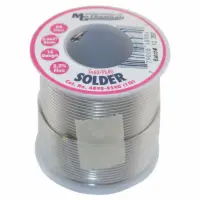
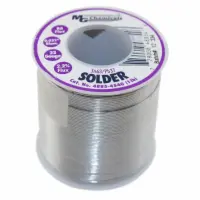
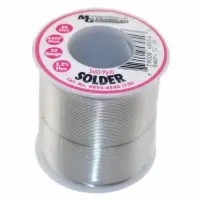
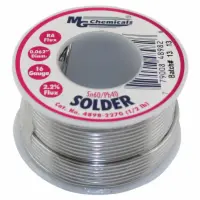
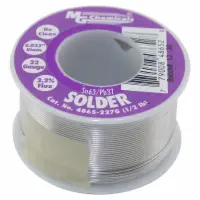
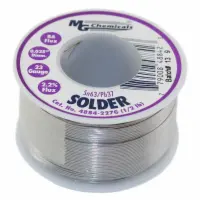
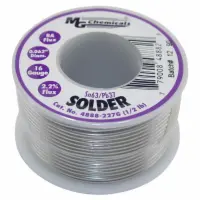
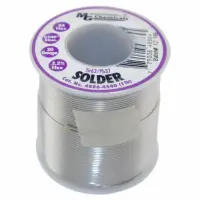
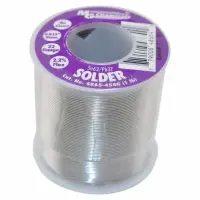
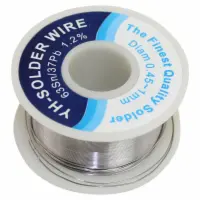
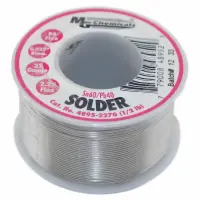
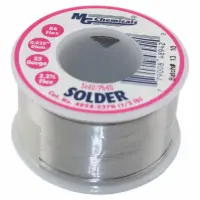
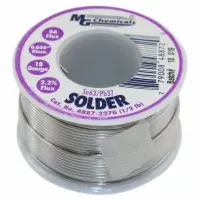
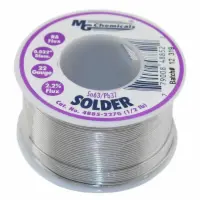
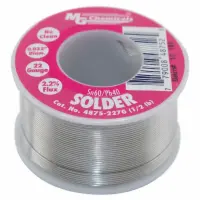
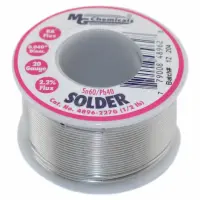
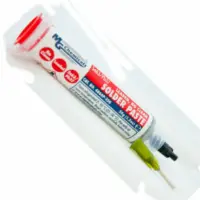
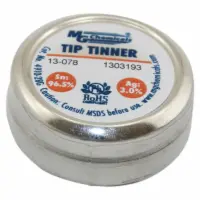
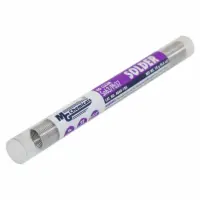
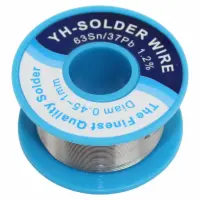
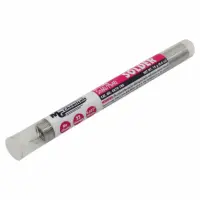
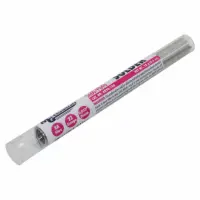
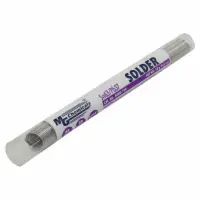

Browse traditional tin lead solder, also called soft solder or lead solder, in a variety of diameters and lengths featuring different tin concentrations, which influence the solder's tensile and shear strengths.
Our no-clean solder tubes use synthetically refined resin and an effective activator, enabling the solder to spread like ordinary RA-type flux without splattering. We also carry lead-free solder.
What is Solder?
Solder (pronounced “sod-der” or “sole-der,” depending on where you are from) is a type of metal alloy that, under the right temperatures and conditions, will melt and join two objects together. The act of melting and then solidifying solder to fuse surfaces together is called soldering.
What is Lead Solder?
Lead solder is solder that, unsurprisingly, includes lead (Pb) in its composition. Originally, most solders had lead because of the low melting point, wettability, and ability to mitigate tin whiskers (which can short-circuit and damage circuitry).
Today, lead solder is less used and banned in some industries and countries because of the potential for lead poisoning. However, lead solder is still the solder of choice for many, especially electrical solderers who enjoy repairing printed circuit boards (PCBs) and soldering surface-mount technologies (SMTs).
The most important part of lead solder is its composition—even the smallest variations can be problematic. For this reason, solderers should always get leaded solder from a trusted credible source that provides detail about the lead composition. MG Chemicals is the only trusted lead solder that Circuit Specialists recommend.
Lead Solder: Pros & Cons
There are several benefits to working with leaded solder over lead free alternatives:
Advantages of Lead Solder
✅ Low melting point. Lead solder has a significantly lower melting point than lead-free solders. For example, solder made of 63% tin and 37% lead (also called Sn63 Pb37 or 63/37 solder) melts at 183 °C or 361 °F. Compare that to lead free compositions like tin-silver-copper solders (Sn-Ag-Cu or SAC solders, for short), which melt upwards at 221 °C or 430 °F.
A low melting point lowers the chances of oxidation while soldering (oxides can cause poor solder joints). Lower temperatures also mean less stress on electronic components
Additionally, not all soldering irons are powerful enough to reach and sustain the temperatures required for lead-free soldering.
✅ Eutectic. Eutectic alloys melt and solidify at one temperature instead of a temperature range. Lead solder’s eutectic properties make for a more controlled and predictable soldering experience. Eutectic solders also help prevent cold solder joints, which can occur if a joint is moved while the solder is still pliable.
✅ Prevents tin whiskers. The lead in leaded solders helps mitigate the development of tin whiskers, which are electrically conductive, tiny crystalline structures of tin that can wreak havoc on a circuit board.
✅ Cost-effective. The more tin a solder has, the more expensive it becomes. Lead solders have a lower concentration of tin, making it more cost-effective than lead-free solders that require high tin to work well.
✅ High wettability. Lead solder has better wettability than unleaded solder. The high wettability of solder helps create shinier, healthier, and more efficient solder joints. Poor solder joints can render a PCB entirely unusable.
Disadvantages of Lead Solder
❌ Health hazards. High levels of exposure to lead can lead to serious health concerns, like poor kidney and brain functioning, anemia, and even death. Solderers must be extra wary of lead poisoning and mindful of the toxic fumes lead solders can create.
For this reason, we highly recommend soldering in well-ventilated areas and using a smoke absorber to remove soldering fumes. (Whether you’re working with leaded or unleaded solder, a fume extractor is always recommended).
❌ Limited application. The potential for lead poisoning limits the application of lead solder, which shouldn’t be used for any plumbing or on any items that could come in close contact with another person.
❌ Potentially illegal. The use of lead solder is banned in some industries, such as plumbing where the lead solder could contaminate drinking water. In the EU, lead solder is incredibly restricted, and today many companies must only sell products that are RoHS compliant (i.e., free of hazardous substances).
Best Lead Solders for Electrical Soldering
The two most common lead solder compositions for electrical soldering are 60/40 Sn-Pb and 63/37 Sn-Pb.
60/40 solders (also: Sn60 Pb40) are alloys made of 60% tin and 40% lead that melt at about 188 °C (370 °F), depending on the exact composition. 60/40 solders tend to be easier to find and a bit more affordable than 63/37 solders.
However, because the alloy is not eutectic, there’s about a 5-degree plastic region where the solder is in between a completely solid and liquid state, pliable but not quite melted. Joints that are moved or disturbed during this small window of plasticity might result in a cold solder joint.
63/37 solders (also: Sn63 37Pb) are alloys made of 63% tin and 37% lead that melt at 183 °C or 361 °F. Not only does 63/37 solder melt at a slightly lower temperature than 60/40 solders, but the 63/37 composition is actually eutectic and solidifies at an exact temperature.
By having a single melting and hardening point, solderers don’t have to worry about the development of cold or brittle joints. The beginner-friendly solder might be harder to find and a tad costlier than other lead solders, but its advantages far outweigh the drawbacks.
